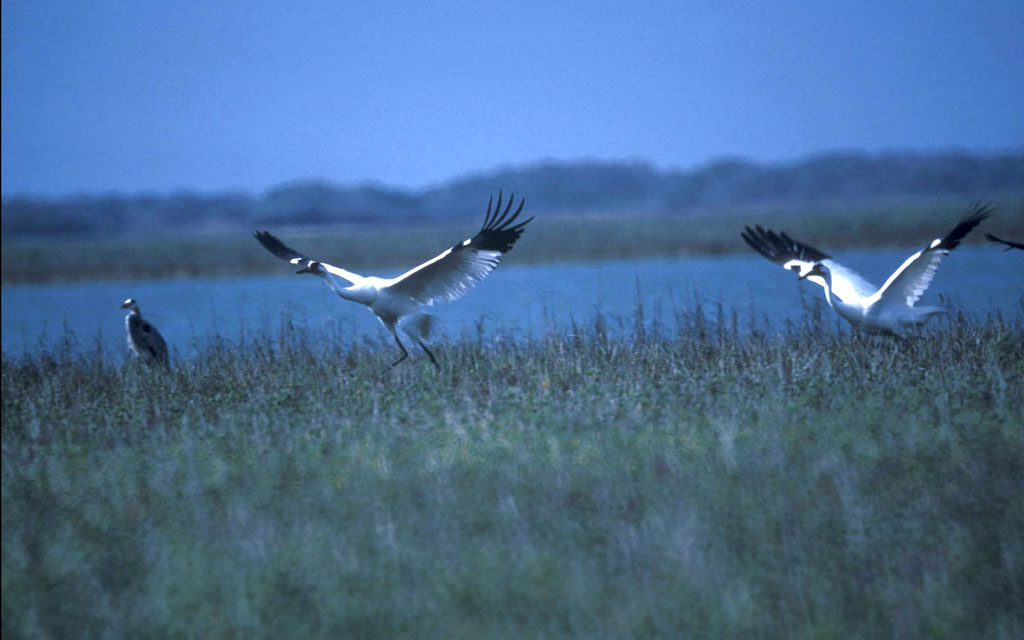by John Jefferson
Time for the Whoopers, that is — and not just the ones yelling for A&M.
The rare and endangered whooping cranes have returned to the Texas coast. If you’ve never made that trip to Rockport and other coastal resorts like Aransas Pass or Port Aransas, there’s still plenty of time. The big, beautiful birds winter along the coast, particularly the Aransas National Wildlife Refuge near Tivoli, until late March or April.
The only natural “natural” flock of whoopers (there are several introduced flocks), the cranes have been making the harrowing 2,500 mile, 50-day flight from Wood Buffalo National Park in Canada for years. Power lines, communication towers, wind turbines and other hazards have taken their tolls. Pollution and human expansion and ignorance have also helped put them on the endangered list. By the 1940s, there were only about 19 cranes left.
They began arriving on October 22. Wildlife biologists estimate that around 505 cranes left Canada for Texas.
A number of tour boats take enthusiasts to see the cranes each fall and winter. It’s become a coastal cottage industry. The first such boat I was ever on was Captain Brownie Brown’s boat, out of Sea Gun resort.
Captain Brownie resembled what you might expect “Popeye the Sailor Man” to look like today, minus corncob pipe and spinach. He was a trustworthy sailor, an astute birder and had a salty sense of humor. One of his favorite lines was to spot a crab on the shore about 60 yards away and alert his customers to it, picking up his binoculars, identifying it as a Texas blue crab, pausing as if studying it, and adding, “ … female.”
When Brown retired, a couple of young bucks took over. They tried hard. On my one trip with them, they identified a coot as a “coot duck.” They’re not ducks, they’re of the rail family. The Cajuns call them “poule deau”, which I have been told means “chicken of God,” since in taking flight, they race across the water on their feet – like walking on water. That morning, the guys ran aground on an oyster reef, and we sat there in the fog for an hour before the incoming tide washed us loose. While we waited, we drank all the boat’s coffee. An oyster boat came by working the reef we seemed to be homesteading. Its name was “¡No Problema!”. Easy for them to say.
I’ve been whoopering with Capt. Tommy Moore several times, and never been stuck on a reef all morning. His boat, the “Skimmer”, is as fine as you’ll find. He’s an accomplished skipper and birder who knows the bays and the birds. The Skimmer gets across the open water to the Intracoastal Canal (Waterway) quickly and to the Aransas National Wildlife Refuge, where the cranes hang out. He’s gets you close to the whoopers but is careful about not disturbing them.
Accommodations are becoming more available in the area as Harvey recovery progresses. For information, contact Sandy Jumper at Rockport Chamber: 361-729-6445.
JJ





